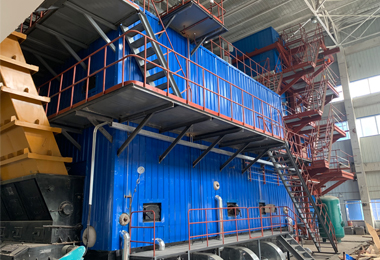
Ağu . 12, 2024 13:32 Back to list
Understanding the Essential Principles Behind Efficient Steam Boiler Operation and Maintenance Techniques
Understanding Steam Boiler Operations A Comprehensive Overview
Steam boilers play a crucial role in various industries, providing an efficient means of heating and energy generation. Understanding their operation is essential for ensuring safety, efficiency, and longevity of the equipment. This article dives into the key components, principles of operation, and best practices associated with steam boiler systems.
At its core, a steam boiler operates by converting water into steam through the application of heat. This process begins with the heat source, which can be generated from various fuels, including natural gas, oil, coal, or even biomass. The type of fuel selected influences the boiler’s efficiency, emissions, and maintenance needs.
The primary components of a steam boiler system encompass the pressure vessel, the burner, the feedwater system, and the controls. The pressure vessel is where water is heated up to the desired pressure level. The burner ignites the fuel, creating combustion gases that transfer heat to the water inside the pressure vessel. The feedwater system is responsible for supplying water to the boiler, while the control system regulates the operation, ensuring safe and effective functioning.
One of the most critical aspects of steam boiler operation is maintaining proper pressure and temperature. The steam generated is used not only for heating but also for driving turbines in power generation and in various industrial processes. Monitoring instruments play a vital role in providing real-time data on pressure, temperature, and water levels. Operators must regularly check these parameters to prevent issues such as overheating or pressure surges, which can lead to catastrophic failures.
steam boiler operation

Another essential consideration in steam boiler operation is water quality. Impurities in the boiler feedwater can lead to scaling and corrosion within the pressure vessel, adversely affecting efficiency and longevity. Therefore, it is crucial to treat the water before it enters the boiler. Chemical treatments, such as boiler water conditioners, can help control pH levels and remove dissolved solids.
Regular maintenance is vital to ensure the steam boiler operates smoothly and safely. This includes routine inspections, cleaning, and testing of safety valves, gauges, and burners. Operators should be well-trained in troubleshooting and should follow a preventative maintenance plan to identify and rectify issues before they escalate. Additionally, periodic assessments by certified professionals can enhance the reliability and safety of the boiler system.
Safety is of utmost concern when operating steam boilers. They are subject to strict regulations to prevent accidents, such as explosions or steam leaks. One of the fundamental safety devices is the safety valve, which is designed to release excess pressure automatically. Operators should familiarize themselves with the emergency shutdown procedures and ensure that all safety equipment is functional.
In conclusion, the operation of steam boilers is a complex process that involves various components and safety measures. Understanding the principles behind their functioning helps operators ensure efficient performance. By prioritizing water quality, conducting regular maintenance, and adhering to safety protocols, industries can optimize boiler operations while minimizing risks. With the right knowledge and practices in place, steam boilers can provide a reliable and effective source of energy for years to come.
-
High-Efficiency Commercial Oil Fired Steam Boiler for Industry
NewsJul.30,2025
-
High-Efficiency Biomass Fired Thermal Oil Boiler Solutions
NewsJul.30,2025
-
High Efficiency Gas Fired Thermal Oil Boiler for Industrial Heating
NewsJul.29,2025
-
High-Efficiency Gas Fired Hot Water Boiler for Sale – Reliable & Affordable
NewsJul.29,2025
-
High Efficiency Biomass Fired Hot Water Boiler for Industrial and Commercial Use
NewsJul.29,2025
-
High-Efficiency Biomass Fired Hot Water Boiler for Industrial Use
NewsJul.28,2025
Related PRODUCTS






















